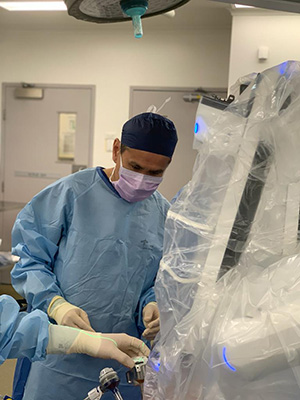
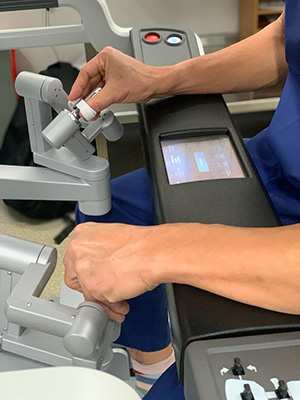
Surgery for prostate cancer is called radical prostatectomy (RP). It involves complete removal of the prostate gland and can be performed via a standard open incision or keyhole / laparoscopic techniques. Keyhole or laparoscopic radical prostatectomy (LRP) is a minimally invasive technique that can be achieved with or without the assistance of an expensive robotic machine.
Traditionally radical prostatectomy was performed through a single incision that extended from the pubic bone to just below the umbilicus (belly button). For robotic/laparoscopic prostatectomy we use 5 small incisions through which ports are placed and specialised instruments and telescopic cameras are then inserted through the ports to perform the surgery in a precise manner facilitated by magnified vision.
When comparing robotic / laparoscopic with open radical prostatectomy the benefits / advantages include improved visualisation, reduced blood loss with almost elimination of blood transfusion, reduced post operative-pain, fewer wound complications, a shorter hospital stay and earlier recovery with a more rapid return to normal activity and work.
Pure laparoscopic prostatectomy without robotic assistance is only performed by a handful of surgeons in Australia, partly due to the intensive training that is required to become proficient and training centres located primarily in Europe where this was pioneered. Dr Louie-Johnsun was trained by one of the world’s pioneers and authorities on laparoscopic prostatectomy who has one of the highest volume of cases in the world.
Dr Louie-Johnsun has subsequently presented at national / international meetings and published his personal results on laparoscopic radical prostatectomy. He is active in the clinical training of future Urological surgeons in the technique of laparoscopic radical prostatectomy and in fact has presented and published Australia’s first and currently only series of training other urological surgeons in laparoscopic radical prostatectomy.
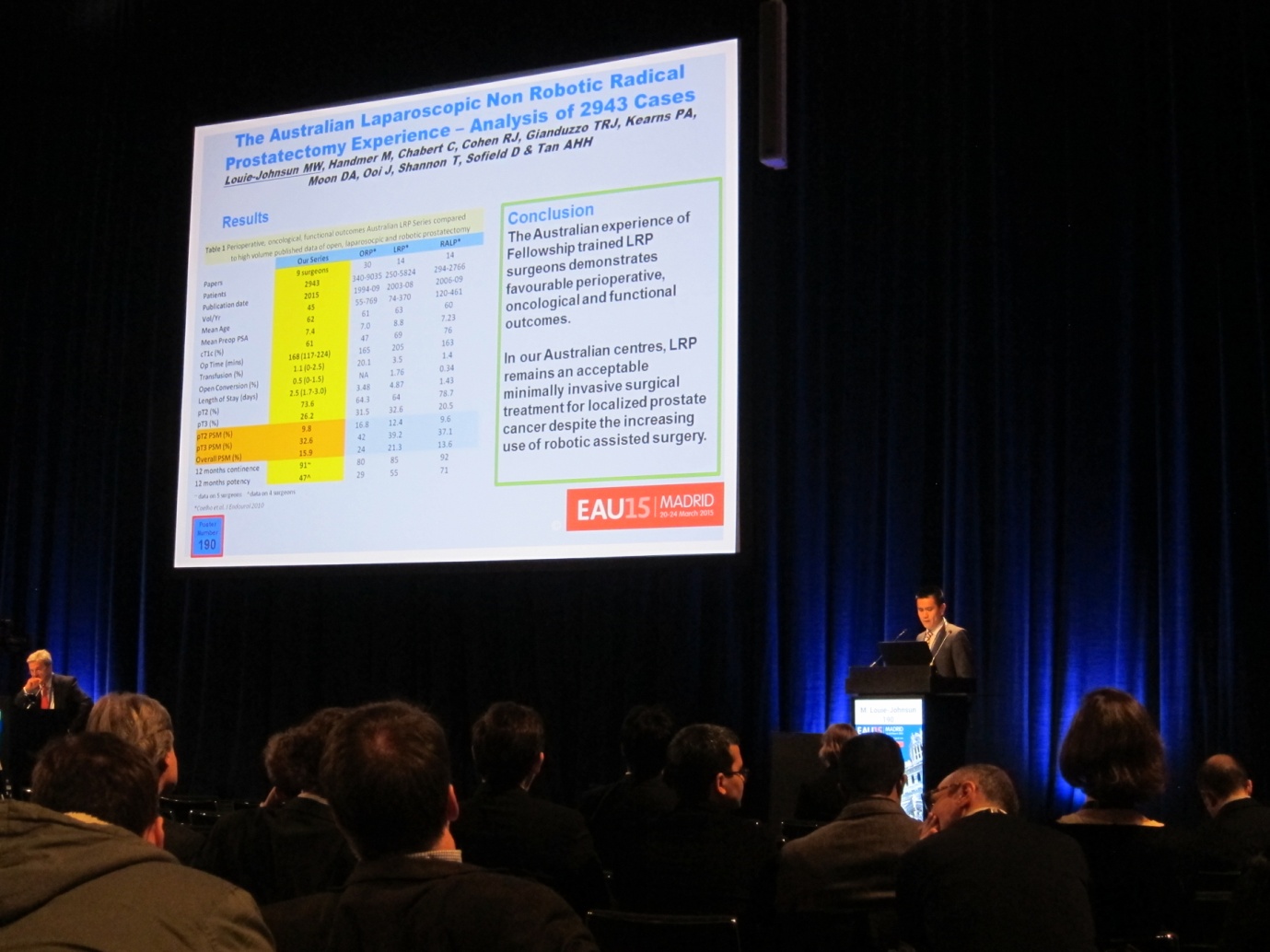
Dr Louie-Johnsun presents at the European Association of Urology (EAU) Meeting, Madrid, 2015 data showing Australian Fellowship trained Laparoscopic Prostatectomy surgeons have no difference in outcomes compared to high volume centres around the world
The nerves that supply the erectile tissue within the penis can be spared and with preservation of these nerves there is a much higher rate of spontaneous erections after surgery and the return to normal urinary function is also much improved. A “nerve spare” operation can always be performed, however the main priority with this surgery is to cure the patient of prostate cancer and a discussion with Dr Louie-Johnsun will detail whether or not the patient is suitable for nerve preservation to maximise functional outcomes.
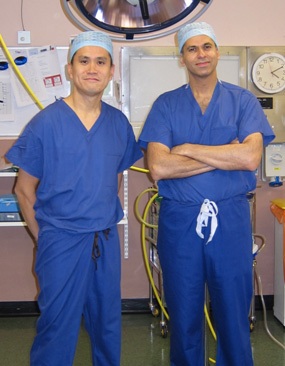
Professor Christopher Eden who mentored Dr Louie-Johnsun for 12 months in 2008 in laparoscopic radical prostatectomy and other advanced laparoscopic techniques
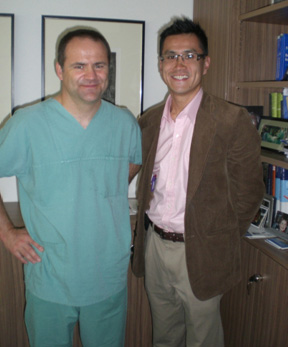
Dr Louie-Johnsun visited Professor Jens-Uwe Stolzeberg, Leipzig, Germany, another pioneer and authority on laparoscopic radical prostatectomy to learn his techniques
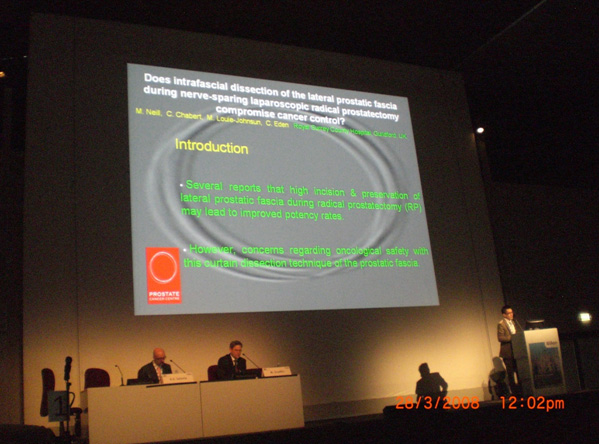
Dr Louie-Johnsun presenting new technical results on laparoscopic radical prostatectomy at the European Association of Urology (EAU) Meeting, Milan, 2008